If SHTF lasts longer than your stored food, you will have to survive on what you can grow. The Native Americans survived and thrived on a limited diet. You can too! A key component in their diet was hominy (in various forms). Fortunately, hominy is easy.
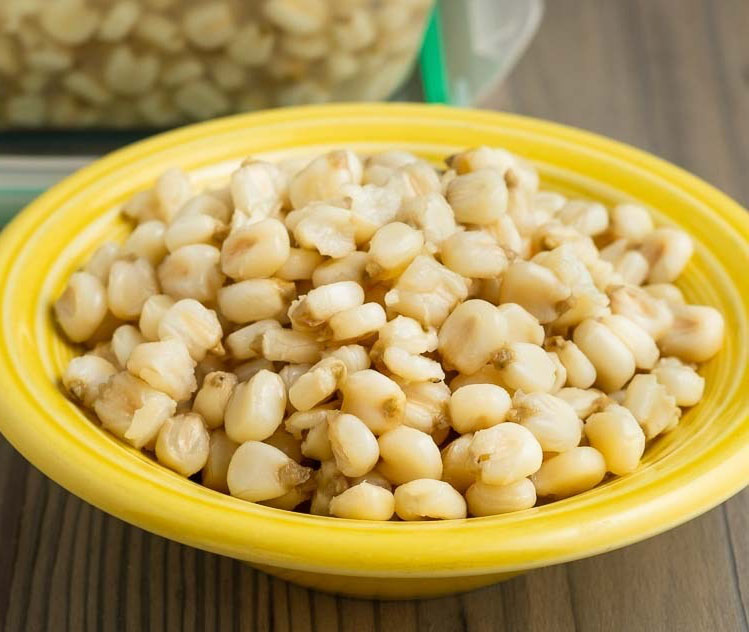
If you’re not from the South, hominy is basically whole-kernel corn that has been boiled in strong lye water that dissolves the tough outer shell (the pericarp) leaving a puffy soft kernel. This process has several benefits so it is well worth knowing how to do it. (More on that below.)
A plus for folks in a collapsed world is that the two ingredients are corn and wood ashes. Even in a post-SHTF world, people can grow corn and are likely to be making fires, so, they will have wood ashes.
Nutritional Benefits
Hominy itself does not excite many people, but one huge plus for it is niacin, vitamin B3. Raw corn has niacytn — a variant that the human body cannot absorb. Boiling corn in a lye solution (like potassium hydroxide — a prominent ingredient in wood ash) causes a process known as nixtamalization. (From the Mexican: Nix=ash, Tamal=corn dough) The process does several good things but one important change is niacytn into niacin which the human body can absorb.
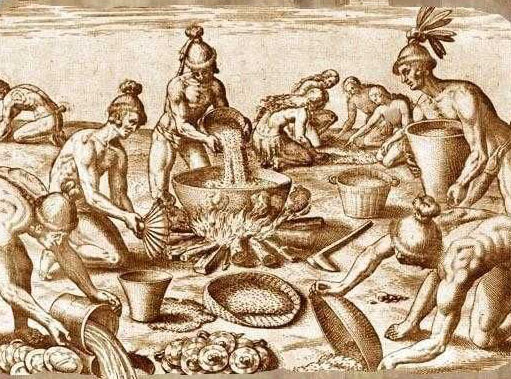
Combine hominy (in whatever form) with beans, as the Native Americans did, and you have a diet with complete proteins. Ancient South and Central American tribes, as well as many North American tribes, were able to thrive on a diet of nixtamalized corn and beans. If you had to, you could too.
Corn Starvation
Columbus brought corn back to Europe. It became a popular food crop because of its high yield. Grinding corn into a fine meal or flour was easy for European-style rotary millstone technology. Fine milling did not improve its nutritional value, however. Raw corn still contained niacytn, not niacin. What Columbus did not bring back with him was the secret recipe — nixtamalization.
Without the lye soaking, corn is nutritionally lacking. Third world countries that rely heavily on corn (but do not nixtamalize) see high incidences of Pellagra — a niacin-deficiency disease. Pellagra sufferers experience severe dermatitis, (rashes, itching, sores), diarrhea, and degrees of dementia (confusion, apathy, etc.) Clearly, something to avoid.
Pellagra was once more common among poor Americans but is rare these days because we have vitamin supplements. A post-SHTF population without multivitamins, eating a diet high in plain corn would eventually begin to suffer from Pellagra again. But, they don’t have to. Nixtamalization is not hard.
Hominy, Grits, Masa & Tortillas
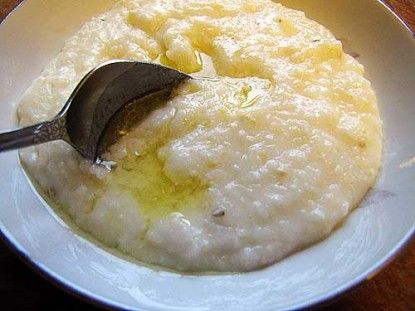
Americans who grew up exposed to Southern cooking are familiar with hominy as a side dish. Hominy grits is another Southern variation that northerners have had very little exposure to. Think Cream o’ Wheat or Malt-o-Meal but made of corn instead.
What most Americans can understand, however, is the corn tortilla of the classic taco. Heck, there are Mexican restaurants in Canada. Who doesn’t know tortillas?
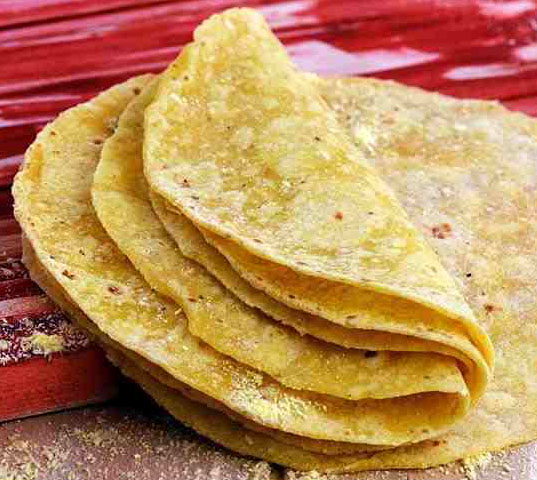
Corn tortillas are made of a dough (masa) created by mashing up fresh hominy. The lye solution converts the starches in the corn to a more gelatinous form that will form a cohesive dough. Plain (un-nixtamalized) cornmeal will never form a sticky dough.
Masa dough can be pressed into tortillas, steamed into tamales or any number of other corn cake variants.
Hominy kernels can be dried (in the sun or wind). Such dried hominy will keep for a long time if kept dry. Later, the dry kernels can be reconstituted with even cool water and be almost like fresh hominy again. Or, they can be ground into a flour. That flour can also be formed into a dough to make tortillas.
Hominy is a staple with a fair bit of variety in preparation.
Cheap Food?

You don’t need fancy corn to make hominy. I grow a variety of flint corn that I use, but even whole kernel feed corn from Tractor Supply will work. I have used TSC feed corn for hominy too. A fifty-pound sack of TSC corn costs ten bucks. Fifty pounds of corn makes a heck of a lot of tortillas.
Storage Care: Whether it’s your own home-grown corn or a sack of horse feed (whole kernel) corn, you want to be sure and keep it dry. Corn is prone to mold. Corn mold is unhealthy. Corn kernels have a moisture content, so if they’re kept in a closed container, they’ll humidify their air and start to mold. Obviously, check your corn before you use it and don’t use moldy corn.
Make Your Own
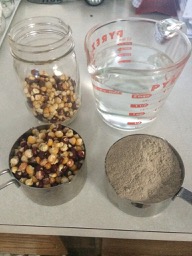
For a small batch, I used one cup of corn to one cup of ash (sifted), and two cups of water. The ratio isn’t super-fussy. You can add more water later, if the water gets too thick. Scaling up, you keep the proportions, though you can back off the ash somewhat as quantities go up. The water leaches out the potassium hydroxide from the ash to create the lye water.
Don’t fret over the thought of eating lye. You rinse it all away thoroughly before you eat it. All that’s left is puffy corn (hominy).
I put the water, ash, and corn in a stainless steel saucepan. Do not use aluminum as the caustic lye will corrode your pan.
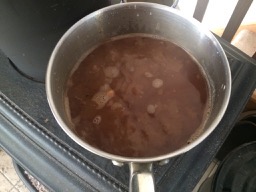
Cover and place on a hot wood stove. On my wood stove, it takes about about three hours. You can use a range-top too (Though would you have that after SHTF?) The goal is to get the lye water up to boiling. Stir regularly, as the ash and corn all settle to the bottom. After it boils, it simply needs to simmer. On a range top, the time is much shorter: an hour and a half or so.
During the simmer stage is when the potassium hydroxide in the ash water is dissolving the hard outer shell of the corn, reacting chemically to change the niacytn, and converting the dry starches into a sticky gel. Potassium and calcium are making their way into the hominy too.
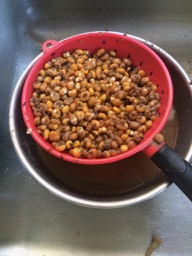
After a couple of hours on the wood stove, you can test the kernels to see if they’re done. Take a few out and rinse them thoroughly. You don’t want to be putting lye water in your mouth.
The kernels should feel soft and slippery. You might even see some of the shell bits slide off between your fingers as flexible and transparent little husks. When the shells are slipping off or the kernels feel soft, the hominy is done in the lye water.
Rinse Thoroughly! The next step is to separate your nixtamalized corn from the ashy sludge. This “mud” is a mix of the ash sediment and the gelatinized shells of the corn. It can be a bit thick.
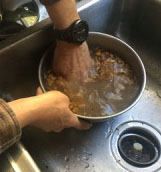
I dump the pan of corn and ash “mud” into a colander with fair-sized holes (smaller than the kernels but bigger than a tea strainer’s mesh). Rinse off all the ash sludge, ideally into some other big bowl and not down your drain.
Run some water through the kernels to rinse them off. I don’t put the ash sludge down my drains out of concerns about killing off my septic tank’s biotics or clogging my drains. Instead, I pour it on a gravel path that I’m trying to keep weed-free. The brown water itself is no big deal for pipes or leach fields.

Rinse More! It will take several changes of water to rinse your hominy clean. Fortunately, the kernels sink. The charcoal bits and the dissolved shells float so you can pour them off. Swish and massage the mass around to loosen reluctant shell bits.
Pour the water off carefully. Your corn stays on the bottom of the pan. The loose husk bits float away. Keep rinsing until you don’t see any more little semi-transparent shell bits (a few don’t hurt anything. It isn’t critical to get out every single bit of former shell). The water should run clear, however — no cloudy gray. If your hominy tastes slightly bitter, you didn’t get all the lye solution off of it.
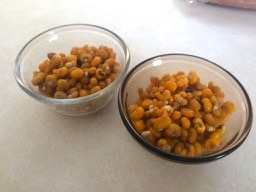
Ta-Daaa! You’ve made hominy. If the kernels are still a little too al dente for your liking, you can boil your hominy in clear water for a few more minutes to be a bit softer. The dear wife likes her hominy softer. I don’t mind al dente. Personal preference. You can eat it immediately as a side dish with a little salt and butter, or…
–
Makin’ Masa
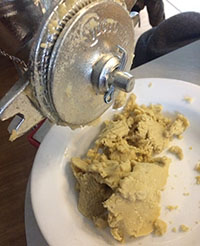
OR, You can mash up your hominy to make a ball of masa dough and make other things out of it. I used a simple grinder to mash my hominy into yellow dough. When forming the balls, you can squeeze them to see if they simply squish or crack and break.
If the dough splits and breaks, it is too dry. Add just a bit more water and knead it in. Knead in a pinch of salt per a golfball-sized lump. A little pepper is good too.

A golfball-sized lump will press out to make a five or six-inch tortilla. There are some good YouTube videos for making tortillas at home.
Thinner tortillas cook faster/better, but thinner also break easier en route to the pan. Cook in a dry cast-iron skillet at medium-high heat until browned. No oil needed.
Makin’ Flour
Alternatively, you can dry your hominy. They dry pretty quickly, depending on your circumstances. Dry hominy can be stored in sealed jars (with moisture absorbers, etc.) and kept for a long time. Dry hominy can be ground in a hand mill (or with grinding stone) to make corn flour — masa. I used my grain mill to grind some masa from my dried hominy. It did not come out quite as fine as commercial masa harina but it still made a nice dough. My hand formed tortilla was not as pretty but tasted great all the same.

Dried hominy can be stored and saved for later, just like the Native Americans did. Masa flour can be ground and saved too, though with less of a shelf-life. Making hominy is a bit of a chore, so it could make sense to cook up a bigger batch than you need at the moment. Save and store the extra for later.
Low Energy Fast Food?
One interesting thing about dried hominy as that it can be reconstituted back on an edible and nutritious food without requiring any additional fuel. A bowl of cold hominy might not excite any foodies out there but if you needed a meal and could not make a fire, you could have cold hominy.
Conclusion

I encourage you to give hominy a try. It does not have to become your favorite food. Boiled beans or sauerkraut will not likely be your first request as a birthday meal either. They will keep you alive, however. Hominy will show you that you can make nutritious food from basic ingredients. Add those beans and occasional sauerkraut and you could actually remain rather healthy.
After you’ve made a batch of hominy, try your hand at making masa dough and making some tortillas or corn cakes. In doing so, you are partaking in a Native American food tradition that is thousands of years old.
If hominy could keep the tribes going for thousands of years, it can keep you going too.

Some research on this subject showed that some 47% of the calories in a rural Mexican diet was tortillas. Give us our daily Bread indeed!
A pound of dry dent corn like from Tractor Supply has 1500 calories. Thus that TS bag of whole corn = 75,000 calories so IF Masa-tortillas-tamales-grits-hoecakes was 50% of your emergency diet that would be 75 man days @ 2000 calorie diet.
Pretty good for around 10.00 TODAY. BTW since last spring this price has climbed from around 7.00 to now 10.00. That’s about a 30% jump in a year.
And food for though you CAN PLANT Whole Dent Corn to grow more. Try that with a MRE. Personally I’s suggest a few pounds of good dent corn SEED set aside but I like options to going hungry next year. An old saying “Don’t EAT your Seed Corn” comes to mind.
TS whole corn will need basic screening through I suggest a 1/4 inch hardware cloth framed screen to remove any dirt and rocks out of it. Not hard work as I’ve cleaned and 5 gallon pailed a few bags in an afternoon listening to music.
Adding Food Grade DE will help keep any bugs from enjoying your stored food. Chickens and other livestock loves it also.
You will need as mentioned in the article a grain grinder. The iron ones plates set loosely can crack your whole corn nicely into chicken feed or coarse grits.